The Data Disconnect: How Australian Businesses Can Move Beyond Gut Instinct
There is a disconnect among many Australian businesses between their desire to use data and what's happening on the ground. Here’s what they can do to embrace data-driven working.
The use of data to drive business decisions is on the rise, but Australian businesses are experiencing a disconnect between how they expect data to be used and what employees are doing. According to Amplitude research, fewer than one in four Australian professionals trust data more than they trust their gut instinct.
To better understand what’s driving this data disconnect, Amplitude recently conducted a survey of more than 1,000 Australian professionals. We wanted to understand how they’re using data currently, what their pain points are, and how they would like to use data in the future. Their responses highlighted some key barriers to embracing data, but also revealed potential opportunities to bridge the divide. We hope these results can help Australian businesses and others around the world to use their data more effectively.
Data vs. instinct
Today, being data-driven is considered table stakes. Spending on data management and analysis is on the rise, and companies are leveraging data to better understand their customers, improve their product experiences, measure program ROI, and more. Yet, 61% of Australians polled in Amplitude’s local survey said they prioritise other factors over data when making decisions.
In fact, just 39% of Australian professionals view data as the most important factor when making a business decision. Other factors that are commonly prioritised over data include what respondents’ teams and customers tell them, what their gut tells them, and what they think their manager or superiors want.
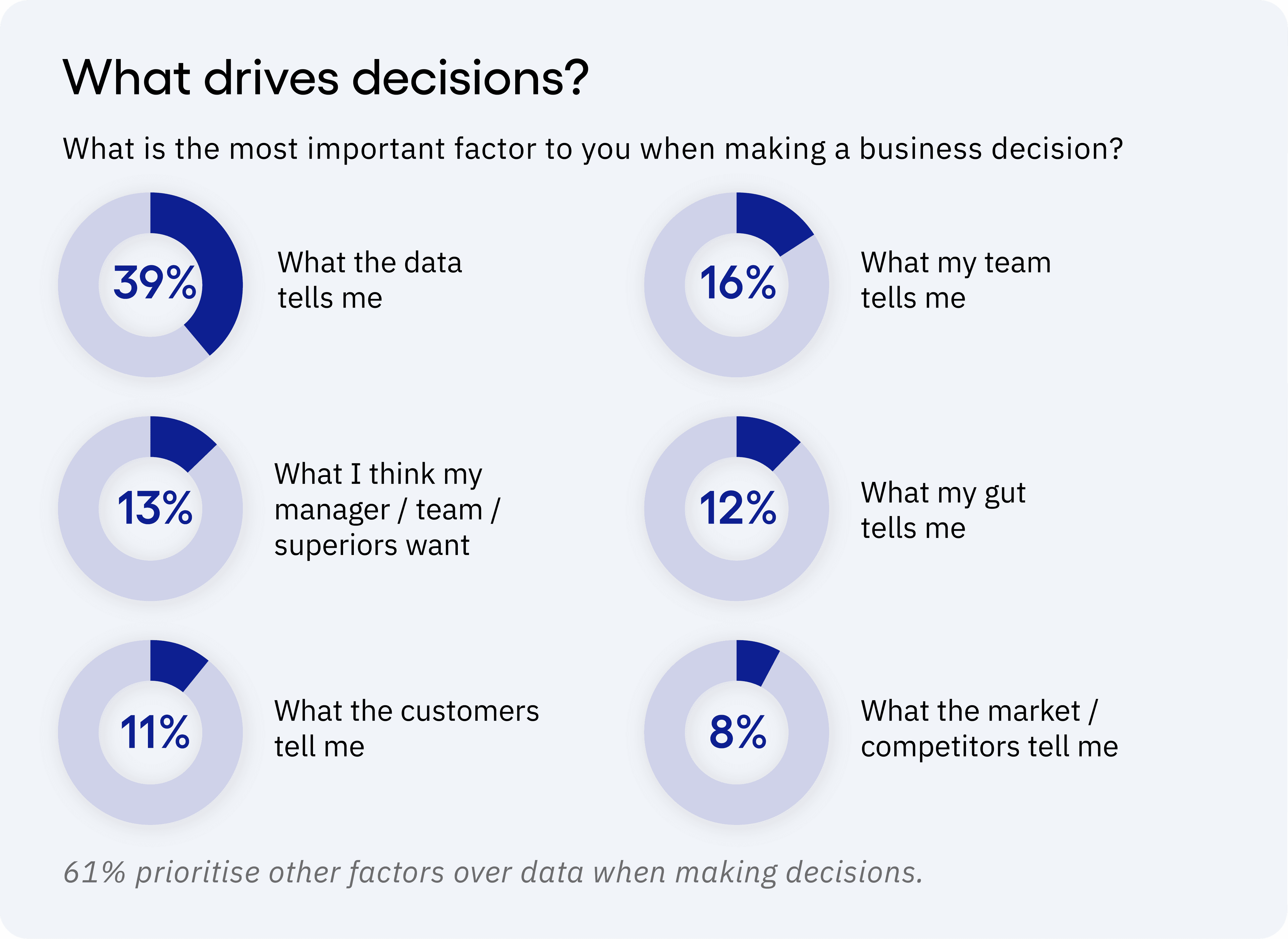
Moreover, only 23% of professionals trust data more than their instincts to make important decisions. By comparison, 77% either balance both data and instincts equally or trust their instincts more than data when making important decisions. This is despite 38% of respondents agreeing with the statement that being data-driven is essential.
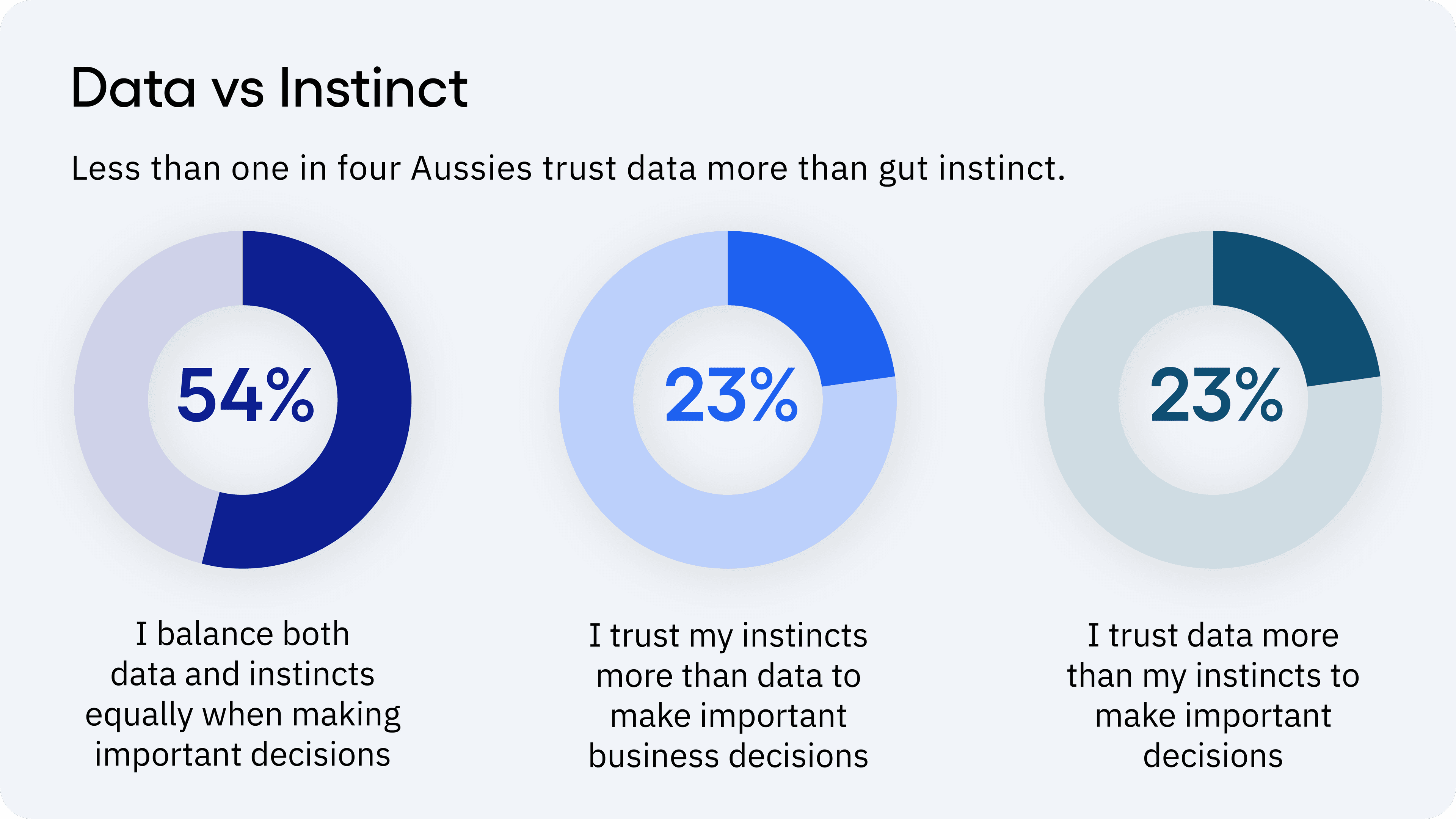
These findings suggest that many Australian businesses may be making important decisions based on nothing more than a feeling. Close to a third (30%) of those polled claimed that their organisation still had a way to go before it could call itself data-driven, and another 17% said it wished was more data-driven, but the reality is far from it.
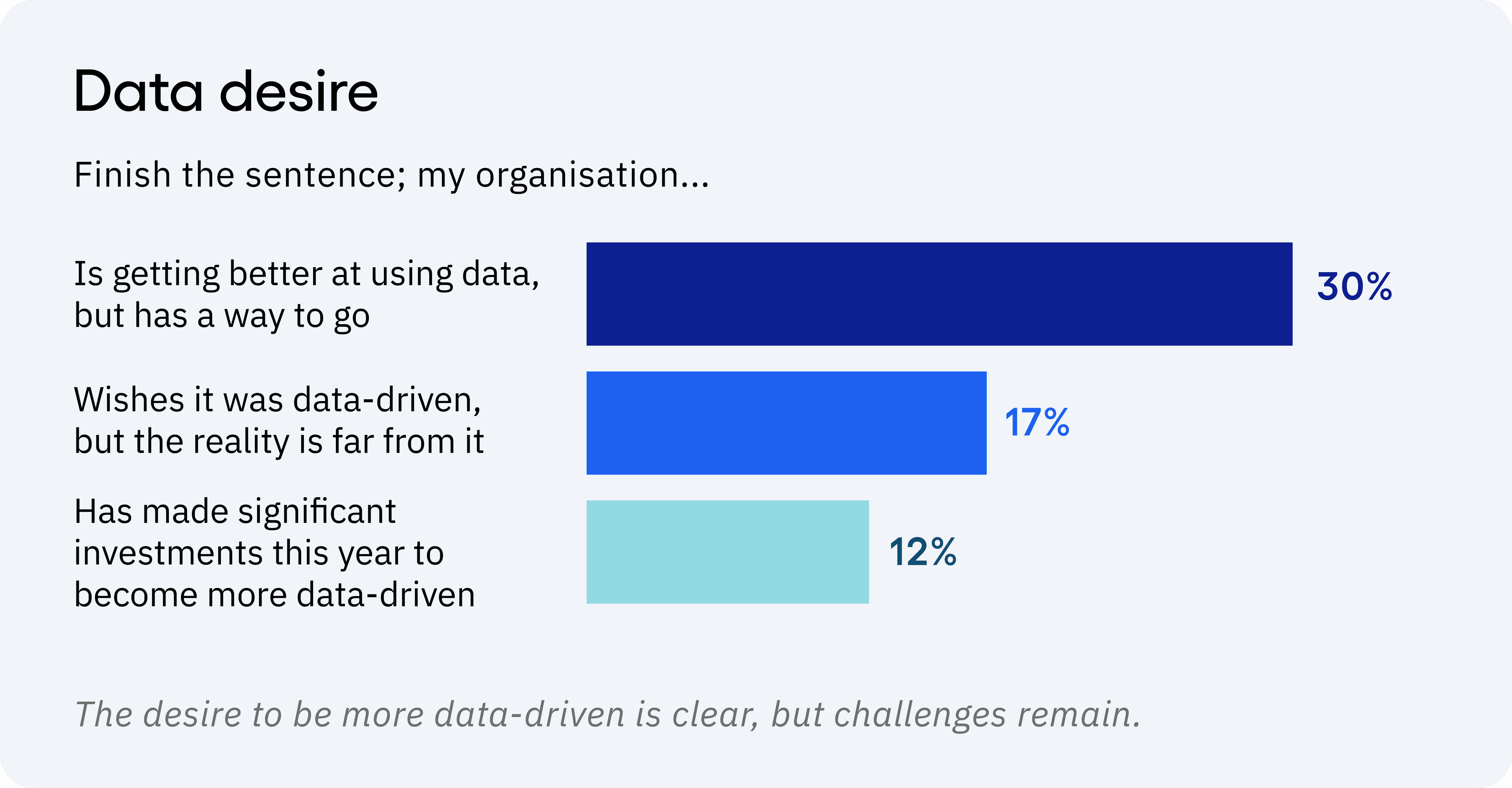
The barriers to embracing data
When you drill down into the potential reasons why Australian businesses aren’t prioritising data as much as they should be, some interesting findings emerge. For instance, among the factors stopping respondents from using data more often, 43% said they don’t know how to use it, while 36% said they don’t have time.
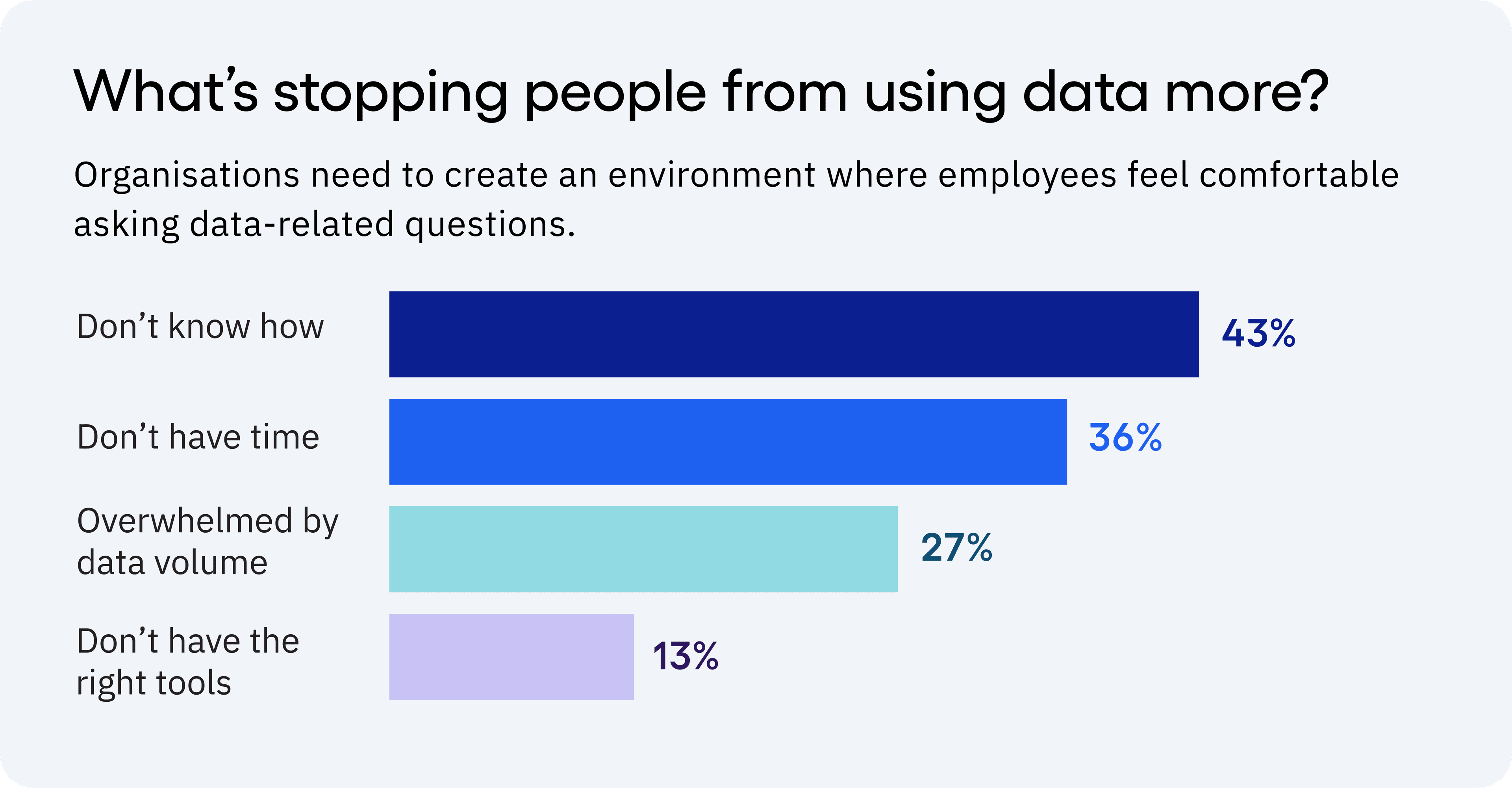
Likewise, 43% of Australian professionals said their company's analytics tools are difficult to understand or require a lot of training, and 29% said they feel either uncertain, overwhelmed, or unqualified about using data at work.
Bridging the data divide
There’s no doubt in my mind that the data disconnect we’re seeing in Australia could be holding organisations back. When gut feelings supersede data as the primary source of decision-making, it becomes all too easy to let human prejudices, assumptions, and selectiveness lead the way.
But all is not lost. Our research also highlighted some of the ways organisations can overcome the barriers many professionals face. For example, 28% of respondents said they would use data more if they had access to higher-quality data.
Additionally, 51% said inconsistent use of data creates challenges for their team, and 21% indicated they would use data more if they had a better way to extract insights from it. Notably, 36% of those polled said they would use data more if they had tools that were easier to use.
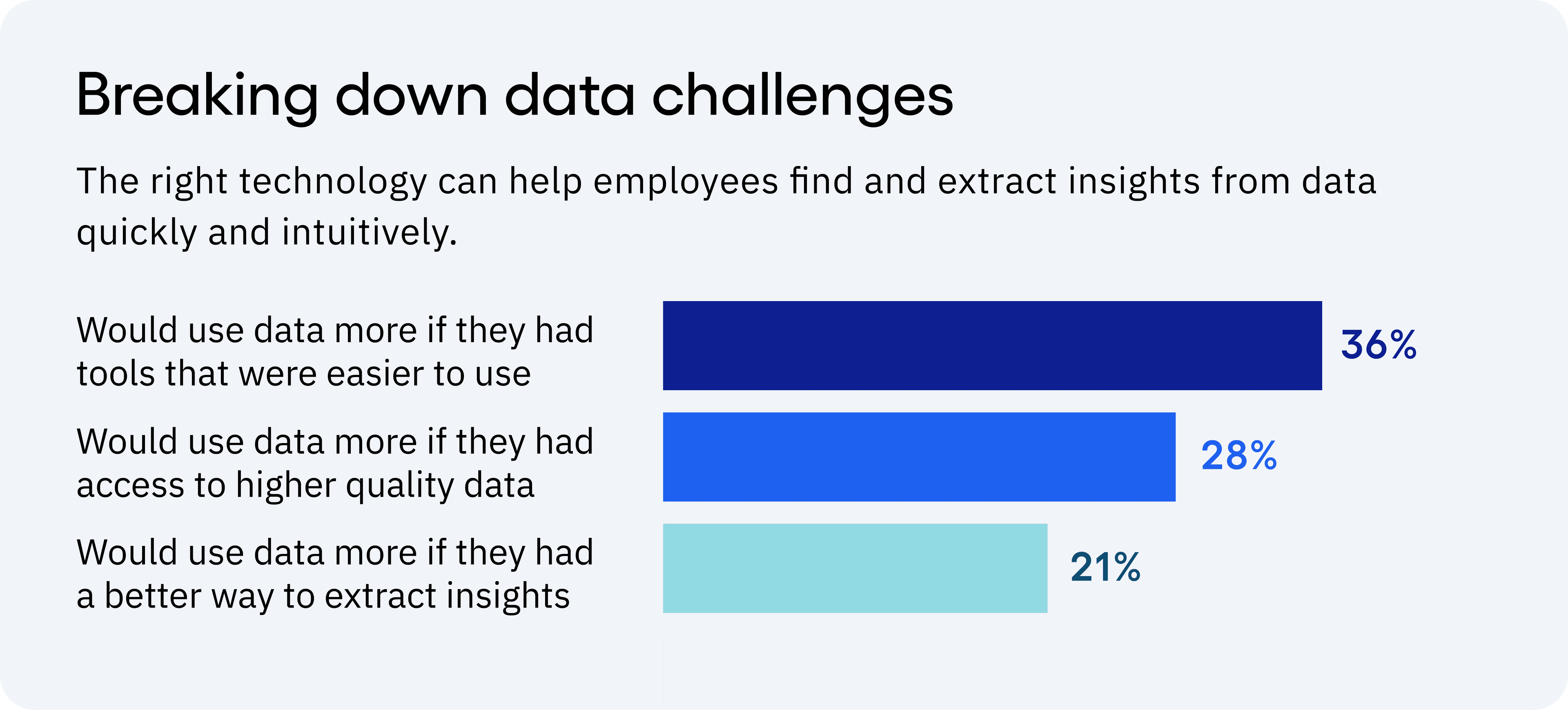
With that in mind, it’s clear that creating a culture of data democratisation is critical to scaling your use of data. By data democratisation, I mean putting systems and processes in place that let people within organisations access and make sense of business data in a way that is user-friendly and practical.
To make that possible, it’s important to break down data silos and consolidate data into a single source of truth. It’s also essential to properly educate those who are tasked with using data, to implement tools that anyone can use, and to empower employees to ask questions about data.
Consolidate data
According to Amplitude’s research, 59% of those surveyed said they trust that the data their company is using is accurate. That means over 41% of respondents either don’t trust their data or are unsure about it.
Given 60% of those surveyed either agreed or strongly agreed that access to more data will lead to better business results, the ability to consolidate business data into a single and trusted place is critical. This reduces data duplication, improves data quality, and ensures different teams are basing decisions off of the same information.
Implement the right tools
With 43% of survey respondents describing their company’s analytics tools as either requiring a lot of training or being difficult to understand, the implementation of data analytics tools that are easy to use is critical. If you're using an analytics tool that requires SQL knowledge or data science team support, there are better options on the market.
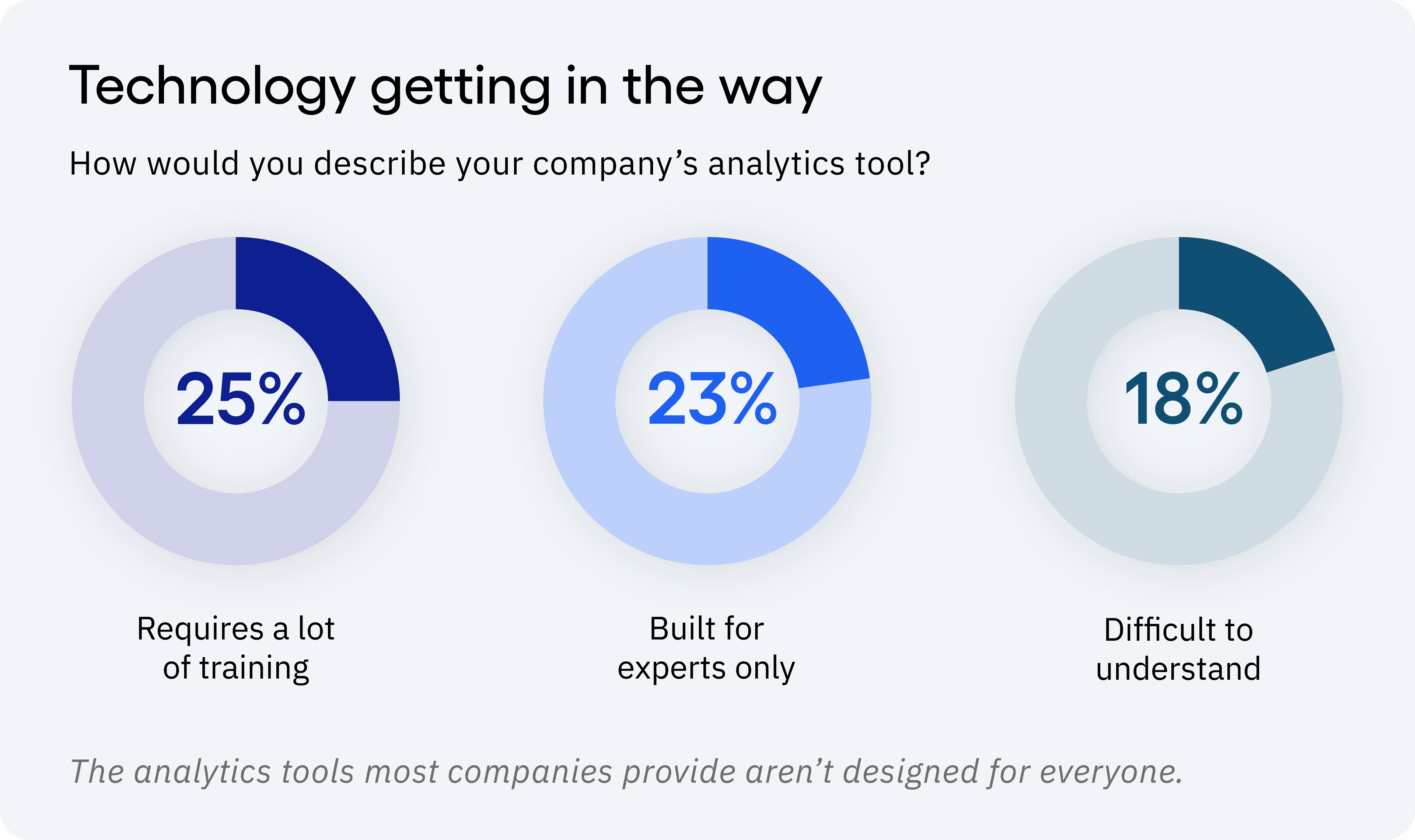
At Amplitude, for instance, we've removed the heavy lifting so teams can get started, get insights, and get value faster. You can set up the Amplitude platform with one line of code and immediately capture user actions in their app or website. Teams can also leverage out-of-the-box insights and an AI-powered query engine to get the answers, best practices, templates, and information they need without having to build or analyse anything.
Empower employees to ask questions
In an ideal world, 38% of professionals want data to help them ask better questions. Asking better questions is a surefire way to power a data-driven business. This is because good questions help teams focus their measurement efforts, increasing the likelihood that what they measure will result in valuable insights.
An important step in fostering an environment for teams to ask the right questions is raising the data literacy among team members. That’s why it’s important to invest in education programs to show employees how to access trustworthy data, what type of data they should be leveraging, and how to use tools that can simplify the analysis process.
Over half of Australian professionals want data to help them make decisions they feel confident in—so it’s time for businesses to embrace data more fully. With the right amount of education, the right tools, and the right environment for team members to ask questions, businesses can put themselves on the pathway to becoming truly data-driven.

Mark Drasutis
Head of Value, Asia Pacific and Japan, Amplitude
Mark Drasutis is the Head of Value, APJ at the leading digital analytics platform Amplitude. With more than 25 years of experience leading digital products, transformation and driving innovation, Mark is passionate about turning complex challenges into opportunities for growth.
More from MarkRecommended Reading

The Product Benchmarks Every B2B Technology Company Should Know
Dec 11, 2025
5 min read

How Amplitude Taught AI to Think Like an Analyst
Dec 11, 2025
8 min read

Amplitude + OpenAI: Get New Insights in ChatGPT via MCP
Dec 10, 2025
3 min read

Introducing the Next Frontier of Analytics: Automated Insights
Dec 10, 2025
5 min read

